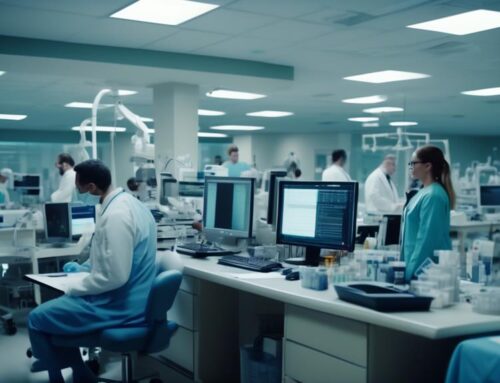Did you know that medical errors are the third leading cause of death in the United States, accounting for approximately 250,000 deaths each year? With such high stakes, it is crucial for healthcare professionals to ensure accurate and efficient medical data entry. But what exactly does this encompass? Medical data entry goes far beyond simply inputting patient names and addresses. It involves meticulously recording patient information, maintaining comprehensive medical histories, documenting diagnoses and treatments, managing billing and insurance information, ensuring the accuracy of digital records, and navigating complex medical coding and healthcare systems. In this discussion, we will explore the various aspects that encompass medical data entry and the importance of this critical task in delivering quality patient care.
Patient Information
When entering patient information into the medical database, use an active voice and contractions to ensure accuracy and efficiency. Patient privacy and data security are of utmost importance in the healthcare industry. By following certain guidelines during the data entry process, you can help protect sensitive patient information and maintain the integrity of the medical records.
To safeguard patient privacy, it is essential to input the information correctly and securely. Make sure to double-check all the details and verify the accuracy of the data before entering it into the system. Additionally, use appropriate security measures to prevent unauthorized access to the database. This may include password protection, encryption, and restricted access to the information.
Furthermore, it is crucial to handle patient information with the utmost care and confidentiality. Avoid discussing patient details in public areas and ensure that only authorized personnel have access to the data. By maintaining strict protocols and following privacy regulations, you can ensure that patient information remains secure.
Medical History
When entering medical data, it is crucial to include the patient’s medical history. This includes information about their past illnesses, surgeries, medications, and allergies. By documenting this information accurately and thoroughly, healthcare providers can make informed decisions and provide appropriate care to the patient.
Patient Records
To maintain accurate and organized patient records, it is essential to efficiently enter medical history data. Patient records, which include medical history, play a crucial role in providing quality healthcare. Here are some key points to consider when managing patient records:
- Patient privacy: Safeguarding patient information is of utmost importance. Implement strict measures to ensure patient privacy and comply with relevant regulations, such as HIPAA.
- Data security: Protecting patient records from unauthorized access or breaches is critical. Utilize robust security protocols, encryption, and access controls to maintain data integrity.
- Completeness: Ensure that all relevant medical history information is accurately recorded, including previous illnesses, medications, allergies, and surgeries.
- Chronology: Maintain a chronological order of medical events to provide a clear overview of the patient’s health journey.
- Accuracy: Enter data with precision and double-check for any errors or inconsistencies to ensure the information is reliable and up-to-date.
Electronic Health Records
Electronic health records, also known as EHRs, are a digital representation of a patient’s medical history. These records contain a comprehensive collection of information, including diagnoses, treatments, allergies, medications, and test results. EHRs are designed to improve patient care by providing healthcare professionals with access to accurate and up-to-date medical information.
However, the implementation of EHRs has not been without its challenges. One of the main obstacles is interoperability, which refers to the ability of different EHR systems to communicate and exchange data seamlessly. Achieving interoperability is crucial for providing coordinated and efficient healthcare. Healthcare providers and technology vendors are constantly working towards resolving these interoperability challenges to ensure the smooth flow of information.
In addition, data security measures are of utmost importance when it comes to EHRs. Patient information must be protected to maintain patient privacy and prevent unauthorized access. Robust security measures, such as encryption, access controls, and regular audits, are implemented to safeguard patient data from breaches and cyber threats.
Diagnoses and Treatments
The accurate and organized recording of diagnoses and treatments is crucial in medical data entry. As a medical data entry specialist, you play a vital role in ensuring the diagnoses accuracy and treatment effectiveness are properly documented. Here are five key points to keep in mind when recording diagnoses and treatments:
- Use standardized codes: Utilize coding systems such as ICD-10 for diagnoses and CPT for treatments to ensure consistency and accuracy in recording.
- Include detailed information: Document specific details about the diagnoses and treatments, including any relevant symptoms, test results, and medications prescribed.
- Follow proper formatting: Organize the information in a clear and structured manner, making it easier for healthcare professionals to access and understand.
- Ensure privacy and security: Adhere to strict privacy regulations, such as HIPAA, when handling patient information to maintain confidentiality and protect sensitive data.
- Collaborate with healthcare providers: Communicate effectively with doctors and nurses to clarify any uncertainties and gather additional information when necessary.
Billing and Insurance Information
Now let’s talk about the crucial aspects of billing and insurance information in medical data entry. You will be responsible for verifying insurance coverage and processing claims accurately. These tasks require attention to detail and adherence to specific guidelines to ensure smooth financial transactions for patients and healthcare providers.
Insurance Coverage Verification
To ensure accurate billing and insurance information, it is essential to verify insurance coverage. This process involves confirming the patient’s insurance plan eligibility and ensuring that the necessary pre-authorization process has been completed. Here are five key points to consider when verifying insurance coverage:
- Confirm the patient’s insurance coverage by contacting the insurance provider directly.
- Verify the patient’s plan eligibility to ensure that the services rendered are covered.
- Check if any pre-authorization is required for specific procedures or treatments.
- Ensure that all necessary documentation is obtained and submitted for pre-authorization.
- Stay updated on any changes in the patient’s insurance coverage to avoid billing errors or claim denials.
Claims Processing
After verifying insurance coverage and ensuring necessary pre-authorization, the next crucial step in the medical data entry process is efficient claims processing for billing and insurance information. Claims processing involves managing and submitting medical claims to insurance companies for reimbursement. This requires accurately entering patient information, medical codes, and treatment details into the claims management system. The reimbursement process can be complex, involving the coordination of benefits, verification of medical necessity, and adherence to billing guidelines. Timely and accurate claims processing is essential to ensure proper reimbursement for healthcare services rendered. It is important to carefully review claims for errors or missing information before submission, as this can lead to delays or denials in reimbursement. Effective claims management is crucial for maintaining the financial stability of healthcare providers and ensuring a smooth billing and reimbursement process.
Digital Records and Data Accuracy
Using digital records for medical data entry ensures accurate and organized information. With the advancement of technology, healthcare providers have shifted from traditional paper-based records to digital systems, improving the efficiency and reliability of data entry processes. Here are some key benefits of using digital records for medical data entry:
- Improved data accuracy: Digital records minimize errors caused by illegible handwriting or transcription mistakes, ensuring accurate and reliable information for healthcare professionals.
- Enhanced data security: Digital records can be encrypted and protected with secure access controls, safeguarding patient information from unauthorized access and ensuring compliance with data security regulations.
- Streamlined data organization: Digital systems allow for easy categorization and retrieval of medical data, making it simpler for healthcare providers to locate and analyze patient information when needed.
- Efficient data sharing: Digital records facilitate seamless sharing of medical data between healthcare providers, enabling better coordination of care and reducing the risk of miscommunication.
- Better data privacy: Digital systems offer more robust privacy features, such as patient consent management and audit trails, ensuring that sensitive patient information remains confidential and protected.
Medical Coding and Health Care Systems
Medical coding plays a crucial role in the efficiency and accuracy of health care systems. It involves assigning standardized codes to medical procedures, diagnoses, and treatments. By accurately coding medical data, health care providers can streamline billing processes, ensure proper reimbursement, and improve patient care.
However, medical coding also presents challenges. The ever-evolving nature of medical treatments and technologies requires coders to stay updated on the latest codes and guidelines. This constant need for education and training can be time-consuming and costly for health care organizations.
Another challenge is maintaining healthcare data privacy. Medical coders have access to sensitive patient information, and it is essential to safeguard this data from unauthorized access or breaches. Health care systems must implement robust security measures, such as encryption and access controls, to protect patient privacy and comply with regulatory requirements.
Despite these challenges, medical coding remains an integral part of health care systems. Accurate coding ensures that patients receive appropriate care, health care providers are reimbursed correctly, and data can be effectively analyzed for research and population health management purposes. As technology advances, the future of medical coding may involve automation and artificial intelligence, which can further enhance efficiency and accuracy in health care systems.
Frequently Asked Questions
What Are the Different Types of Medical Data Entry Processes?
When it comes to medical data entry, there are various types of processes involved. It’s crucial to maintain accuracy in this field as even a small error can have serious consequences.
How Are Patient Privacy and Confidentiality Maintained During Medical Data Entry?
When it comes to medical data entry, you need to ensure patient information security. By following HIPAA compliance guidelines, you can maintain patient privacy and confidentiality throughout the data entry process.
What Are the Common Challenges Faced by Medical Data Entry Professionals?
You, as a medical data entry professional, face common challenges such as maintaining data accuracy and ensuring data security. These challenges require your vigilance and attention to detail to ensure patient information remains confidential and protected.
Is There Any Specialized Training Required for Medical Data Entry?
To excel in medical data entry, specialized training is necessary. It equips you with the knowledge of medical terminology and ensures accurate and efficient data entry. Don’t underestimate the importance of this training!
How Does the Use of Technology Impact Medical Data Entry Processes?
As you engage with the wonders of technology, medical data entry processes become more efficient and streamlined. With technology advancements, you’ll witness a seamless flow of information, enhancing the accuracy and speed of data entry.




